Designing a Storytelling Platform
I worked with the Indiana Museum of Medical History to design a visitor experience that bridged the in-person and digital spaces of the museum which allowed visitors to continue to learn about the history of the hospital after their visit to the museum.
Duration: 1 year | Role: Product Designer Consultant | Team: Capstone Project
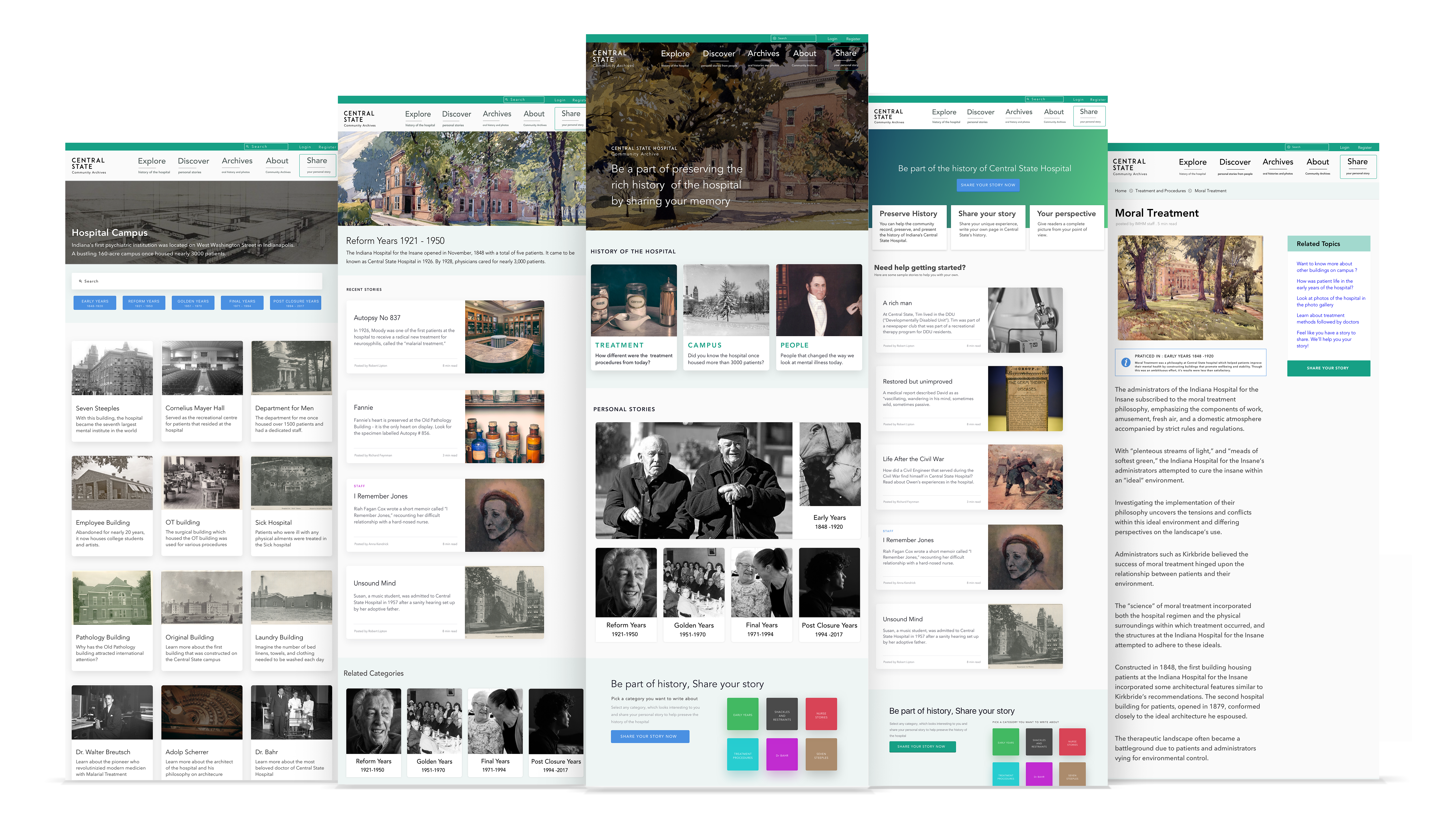
Client Goal
Indiana Medical History Museum helps preserve the rich history of Central State Hospital. The museum director wanted to create a community space where people could get together and share stories about the hospital, with the aim of preserving the history of the hospital.
Market Research
I started by looking at general crowdsourcing websites such as Kickstarter and Indiegogo to better understand how these popular websites attract people to share their voices and present their perspectives, with a focus on ways we can show stories that are created by the user.
Field Research
A concrete understanding of in-person interaction with the museum helped us be informed on the possible ways we can create our digital solution. The goal was to understand how we may provide users the ability to view personal stories they were interested in, document the stories around the institution, and facilitate the process of sharing the story in an easy-to-use fashion.

User Research
We followed that with a total of 6 interviews with potential users to better understand their roles, needs, and requirements 3 volunteers from the museum and 2 storytellers. The personas helped us distinguish between the other types of users involved in the museum.

Affinity Mapping
Using the research from other solutions, stakeholder input and visitor interviews, I collaborated with a fellow designer to create post-its with all known information and group them into labels for categorizing data.


Visioning Exercise
The visioning exercise helped illustrate a single vision of joining the in-person museum experience that could then be supplemented with the online discovery of curated stories. Our solution should
- Illuminate the facts for a thoughtful historical narrative
- Capture the stories around the patient's lives in an engaging way
- Enable people to share their stories from their chosen perspective
We wanted to identify ways in which technology can create a positive experience that promotes the visibility and effort of the museum.

Vision
The vision was to design a crowd-sourced storytelling platform that allowed museum visitors to learn about the history of the museum and share experiences that help curate the past, for the museum.
Goals
Viewing Stories
We wanted to make it easy for all visitors to view stories about history, be they in person or online. We needed to separate stories into groupings that provided value.
Sharing Stories
A seamless experience that allowed users to digitally upload stories, that could be reviewed by the museum staff before publication.
Information Architecture
To understand the user's mental model and create the information architecture we conducted an open card sort exercise with the stakeholder. Using the labels obtained from the open card sort we conducted 5 closed card sort sessions using OptimalSort software with docents, routine visitors, and museum staff.
Filter by Themes
We identified four major themes for the categories:
- Early Years 1848 - 1920
- Reform Years 1921 - 1950
- Golden Years 1951 - 1970
- Final Years 1971 - 1994
Filter by Content
We classified content into 3 overarching themes:
- Medical Treatment
- Hospital Campus
- People

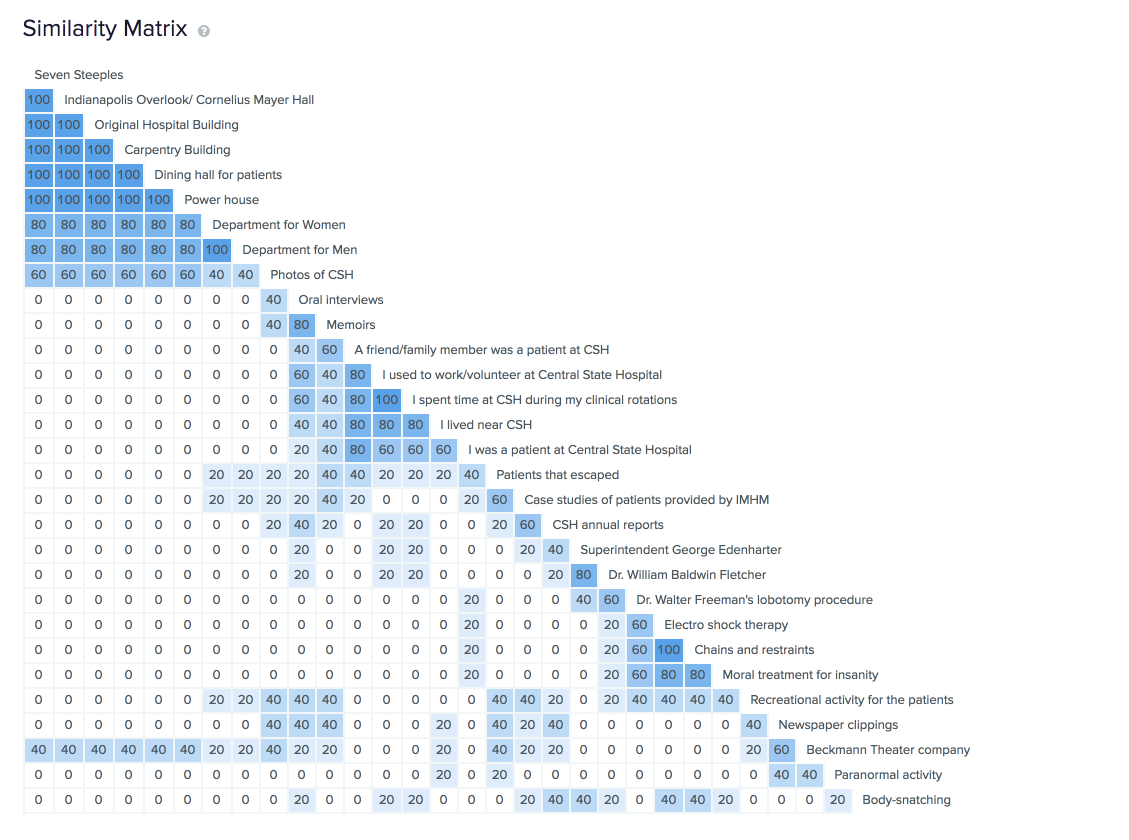

Wireframes
We did a collaborative design workshop with museum visitors, stakeholders, and docents to identify this format. This exercise also provided some unique insights on why single-page formats were better than multi-page or slide show type formats.
Once we had a solid navigation structure we explored different ways we can prompt people to capture their stories. We used sketching on paper to test the following ideas:
Questions that users can answer about the history of the hospital
- Themes they can write about
- Categories they may wish to explore more about
- Tags that would make search and content management simpler

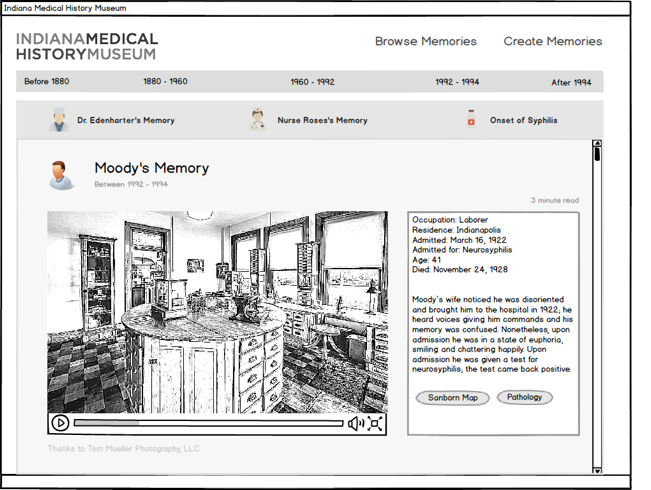
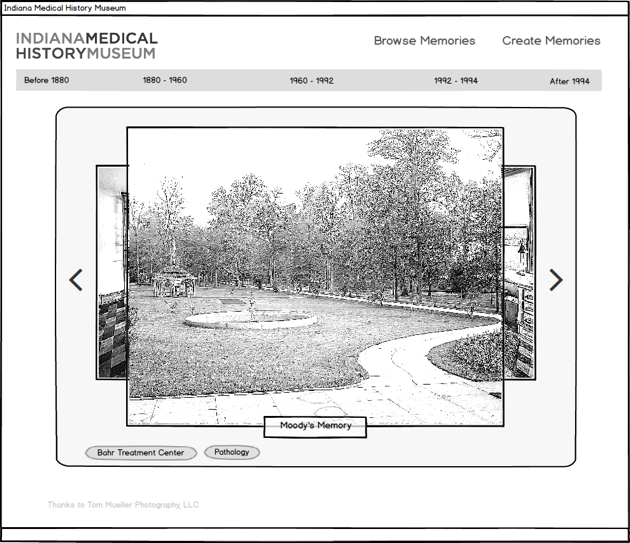
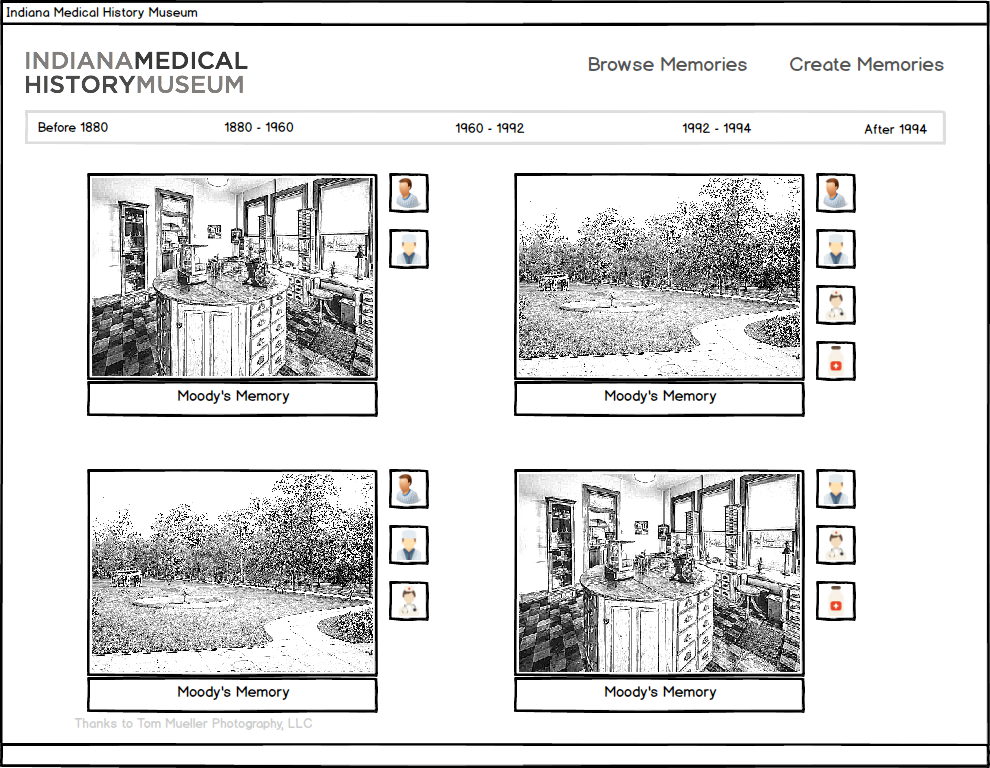
Final Polish
We created a storytelling website that was divided into several themes for easy navigation, a dedicated story creation flow, and administrative features to moderate and manage the content.

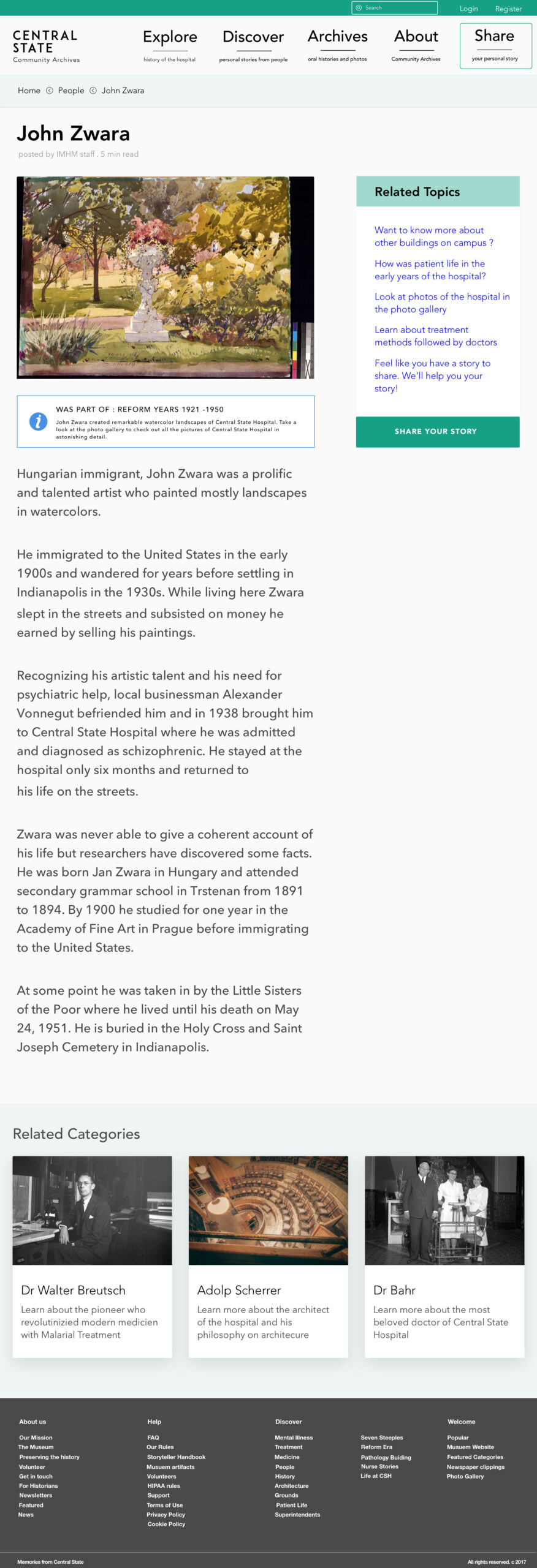

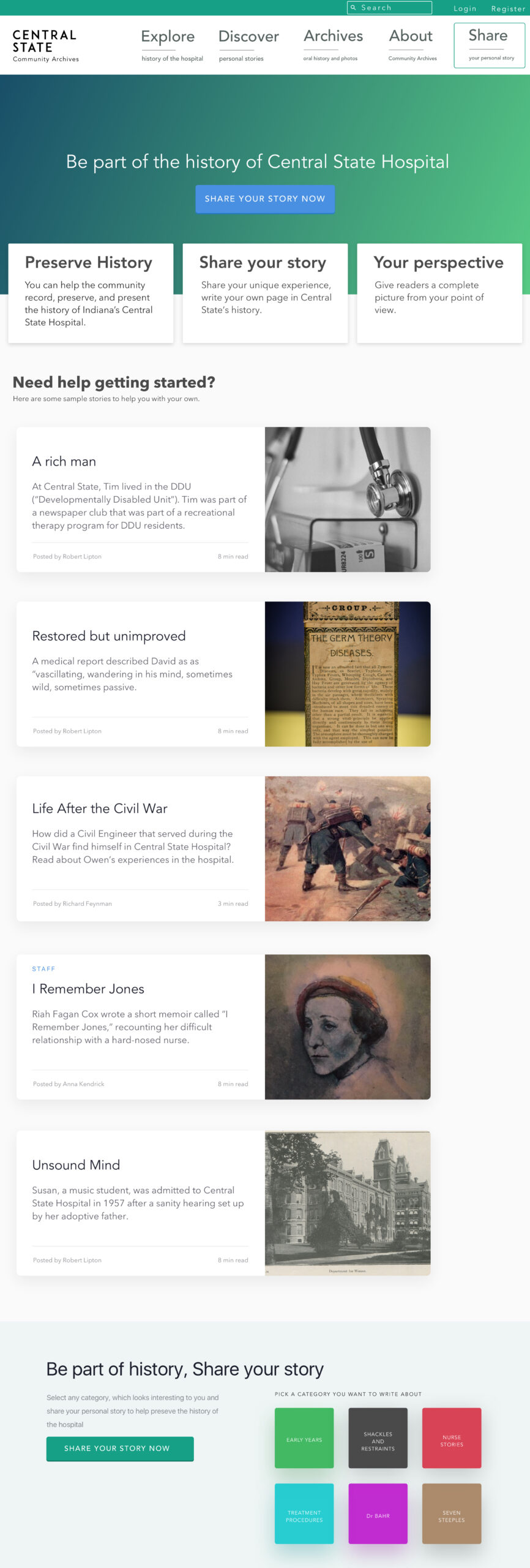



User Testing Findings
I conducted usability tests with ~20 stakeholders and museum visitors over 8 weeks to create and refine the high-fidelity prototype. By differentiating the flows between viewing content, creating content, rating stories, and flagging and reporting them, we were able to cover all aspects of the website.
Related Topics Section
The feedback revealed that a lot of our customers wanted to explore the website using topics related to what they were already interested in. So I added a Related Topics section to highlight this.
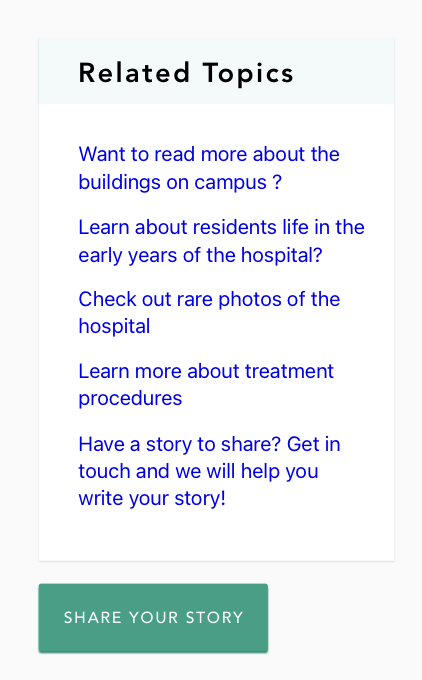
Guidance with Writing
A big pain point in usability testing was guidelines on how to write content that would be approved by an administrator. To assist with that, I added a section on the same.
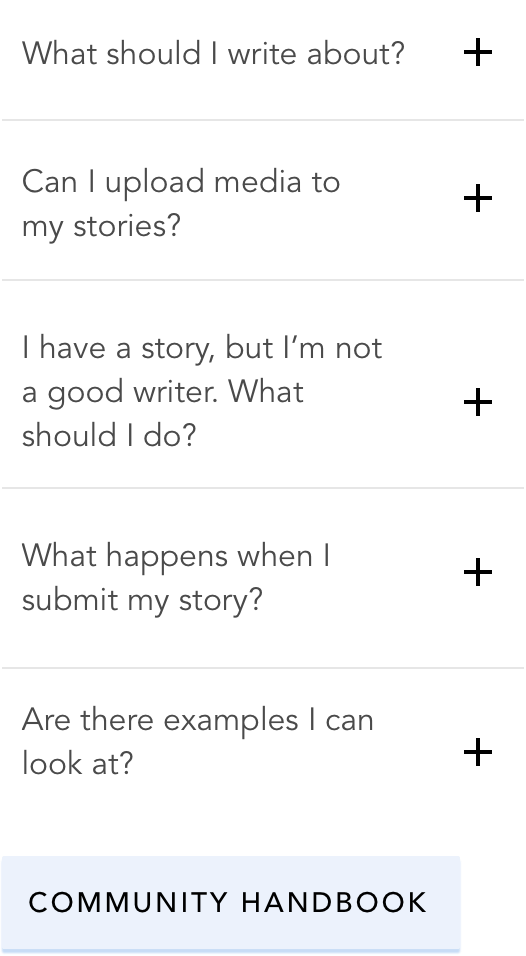
Reflections
Learnings
In this project, I was able to learn new skills in Interaction Design and Visual Design, conduct both formative and evaluative research along with multiple rounds of iterative design.
Takeaways
Responsive design should start with a Mobile First Approach. Early feedback can reinforce project constraints. Inviting stakeholders to user research has positive effects on project goals


